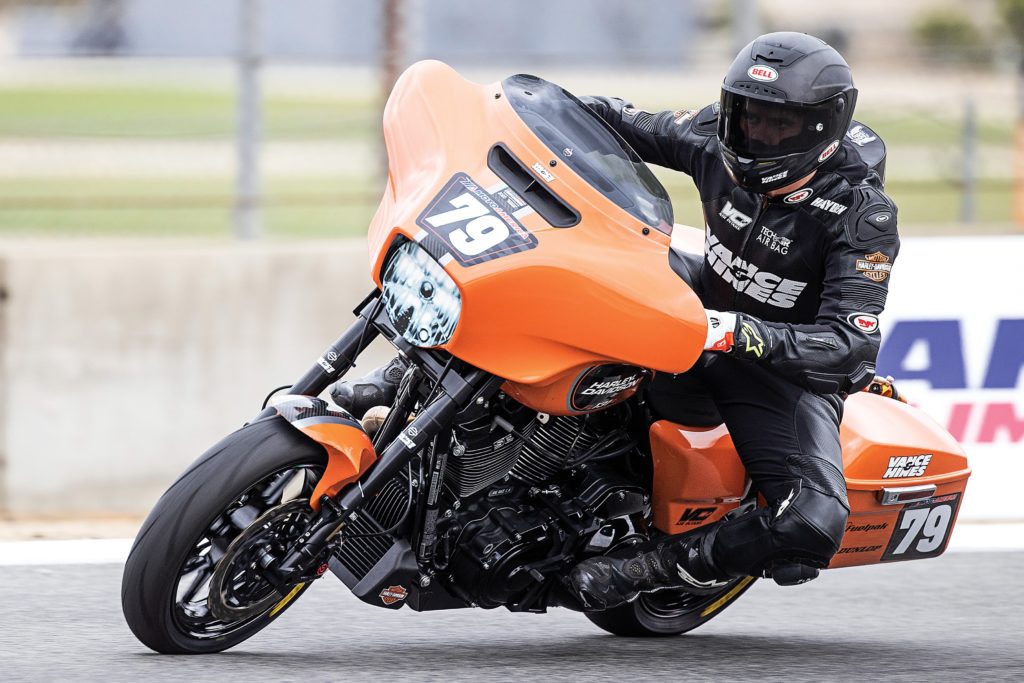
Vance & Hines turns a stock Electra Glide Standard into a speed demon — and grabs runner-up honors
When it comes to motorcycle racing, Vance & Hines has pushed the sport to the extremes of power and speed, all while racking up win after win and championship after championship – and developing an aftermarket powerhouse that has redefined the very definition of performance.
So when they were first approached with the insane idea of racing monstrous baggers at Laguna Seca, they knew they would be going all in even if it was like taking an “18-wheeler out racing,” explained legendary Vance & Hines drag racer Eddie Krawiec.
“When you step back and look at these 800-pound bikes and consider that fact that you’re going to put someone on it that will push the thing into a corner at 100 mph-plus, you have to have some sympathy for the rider…because it doesn’t appear that the result will be good,” Kraweic told Thunder Press.
But that notion just made the challenge that much more exciting for Team Vance & Hines racer Hayden Gillim, who ended up second in the race.
The first order of business was obviously to shed as much weight from their stock Harley-Davidson Electra Glide Standard as they possibly could, with the theory that less weight and more power was the key to sling-shotting the bike to the podium.
The build team, spearheaded by engineer Mike Hasek, started by completely disassembling the bike and weighing every part individually to find the quickest way to make it lighter.
“It is no secret that when Harley builds something it is pretty well overbuilt,” said Krawiec. “Our target was to shave off 150 pounds, make it as light as possible, but retain the factory look.”


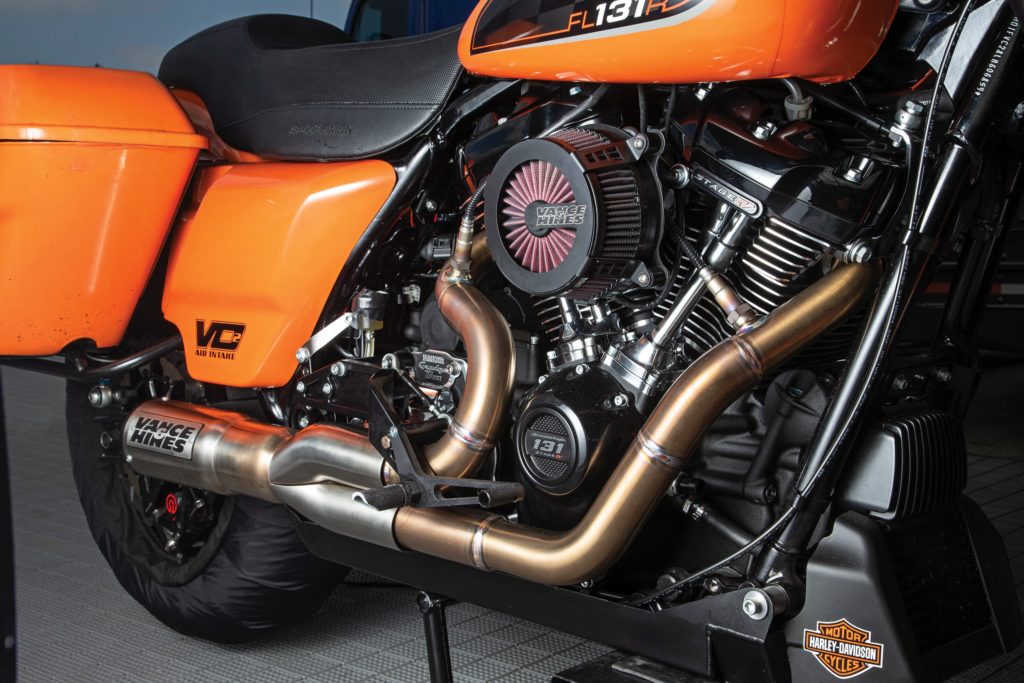
After replacing the battery, manufacturing their own rear subframe and making the bodywork out of carbon fiber (and also ditching any unnecessary parts), they got pretty close to their goal weight.
But they also faced a time crunch, having started the build relatively late in the game due to the uncertainty of the event even happening given the ongoing Covid-19 pandemic. In total, the bike took a little over five weeks to complete.
“The hard part was that we weren’t even sure if the event even was going to happen,” said Vance & Hines head of sales and marketing John Potts. “We take racing seriously here, and to do things right you have to devote a lot of resources to it.”
Besides shedding weight, Krawiec had two other basic tenets to his plan of attack. One was to make as much horsepower as possible by installing a 131-cubic-inch crate motor, while the other, and bigger, challenge was to make that horsepower reliable.
“Reliability was essential,” said Kraweic. “We wanted a bike that would finish the race because if you can’t finish, what is the point of putting in all that effort.”
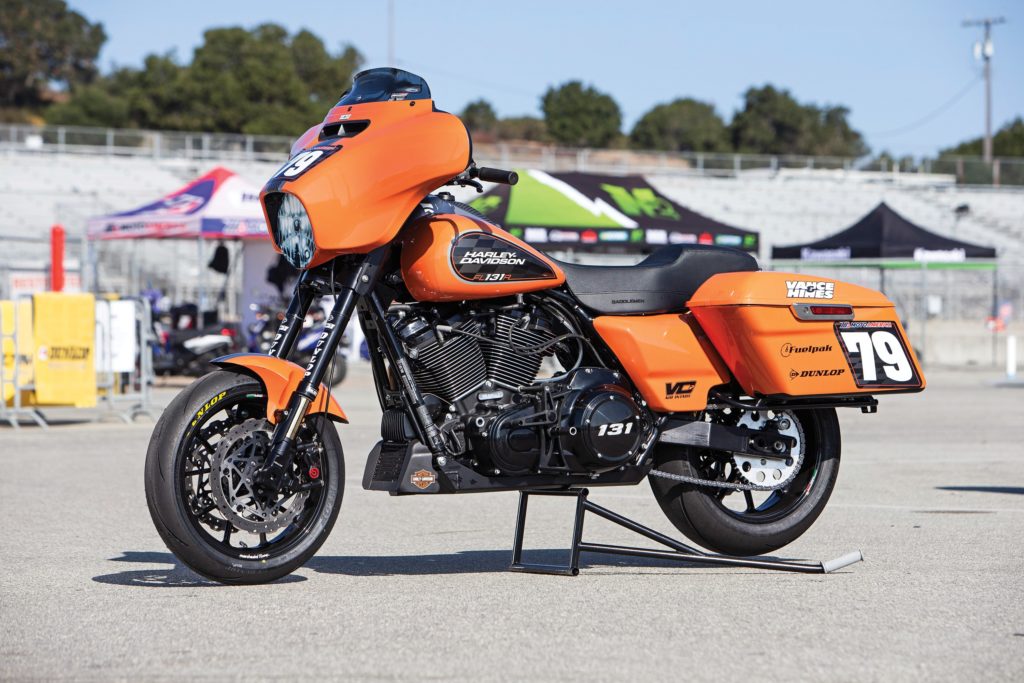
With a few tweaks and numerous sessions on the dyno, the Vance & Hines build was consistently putting out 160 horsepower. But as Potts and Krawiec explained, this inaugural King of the Baggers race is only the beginning for what these baggers can achieve.
“[Krawiec] believes he could get 200 horsepower out of the engine, with 175 to 180 horsepower already within grasp if we had more time,” said Potts.
“We didn’t want to completely push the limits just yet because we wanted to see how the bike would do on the track,” added Krawiec. “The problem is you really have to make these bikes fast, because they aren’t built to be fast.”
On the chassis side the team raised the bike to gain more cornering clearance by installing a Kraus +2 KRT inverted fork up front while lifting the back by adjusting the rear shock bolt placement and changing the OEM bag placement to support a one-off exhaust system that’s now in the early stage of production for average consumers with Milwaukee-Eight engines.
“In terms of suspension,” said Krawiec, “I didn’t want to reinvent the wheel, and leaned on aftermarket companies to validate what we were trying to achieve.”
While Team Vance & Hines only finished the build a little over a week before race day, they had to scramble to get Hayden Gillim on the bike to test it and make changes that fit his style of racing, explained Potts.
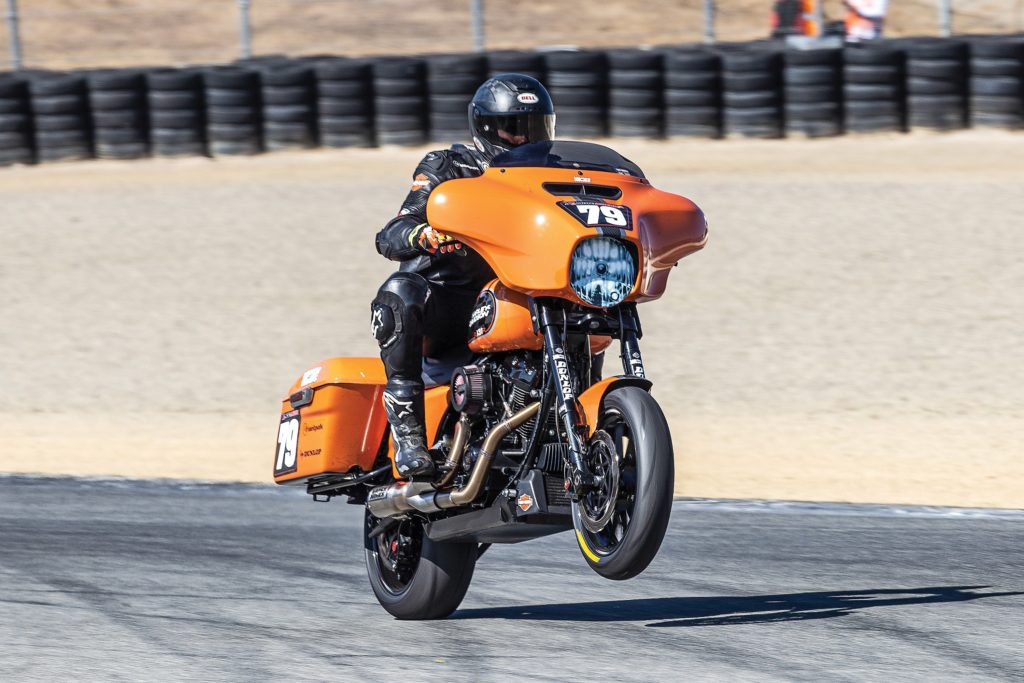
“After the build was complete,” he told us, “we raced to Kentucky to get some track time because before that, all we did was ride the motorcycle in the parking lot to make sure the brakes worked,” explained Potts. “But Hayden shook it down and we made some suspension tweaks, got in four or five hours of riding before we put the bike in the van and jetted to California.”
“We knew we wanted someone with some strength,” added Potts, “and after we tested the bike, we knew he was our guy.”
Despite just missing out on the overall win, the event was a big win for Vance & Hines, and the company fully intends on participating in the rumored bagger class for 2021.
“The teams that jumped in and got involved all showed how dedicated they are to making this event a success,” explained Krawiec, “with most of the motorcycles being $100,000-or-more motorcycles when you factor in parts and labor.”

“For everybody that did it,” he added, “it shows a big commitment, because this was a huge investment for the teams, and MotoAmerica knows we as a group are serious.”
Nevertheless, he added, “If we had 20 less pounds and 20 more horsepower, I have no doubt we would have finished first. For us it is all about weight and power, but we just needed more time.”
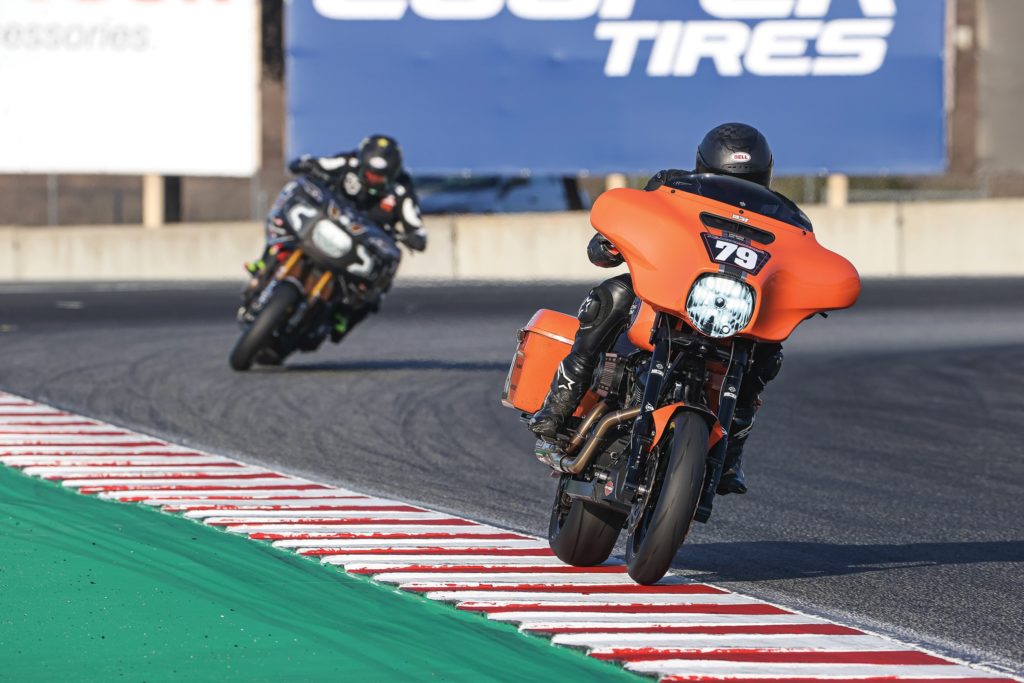
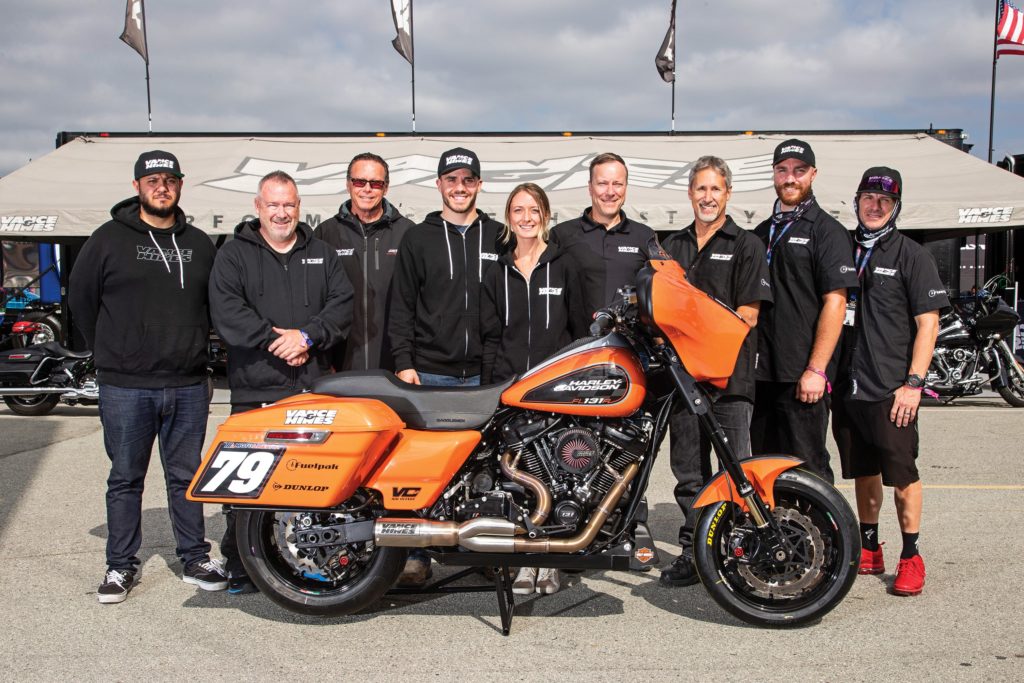
Given the industry camaraderie the team experienced and the awe the bikes and teams generated, plus the overwhelming support the event has created on social media, Krawiec expects more Harley-Davidson riders and teams to jump at the chance to modify their baggers into race-worthy V-Twins. And Potts said the company is already looking at developing and manufacturing packages that customers and dealers can buy to get in on the action.
“Our goal is not only to produce products to get us into the winners’ circle, but help others get in that circle,” he said, adding that Krawiec keeps the company on its toes in the racing department to make sure what it builds works.
“When you stumble onto something like this,” Krawiec said, “which receives such a solid response not only from fans but from the Superbike racers, you don’t just let it slip away. It is up to the aftermarket to embrace it, adapt and move forward with it to the next level.” It’s gonna be fun to watch!
Follow Thunder Press’ in-depth coverage of the King of the Baggers race throughout December!


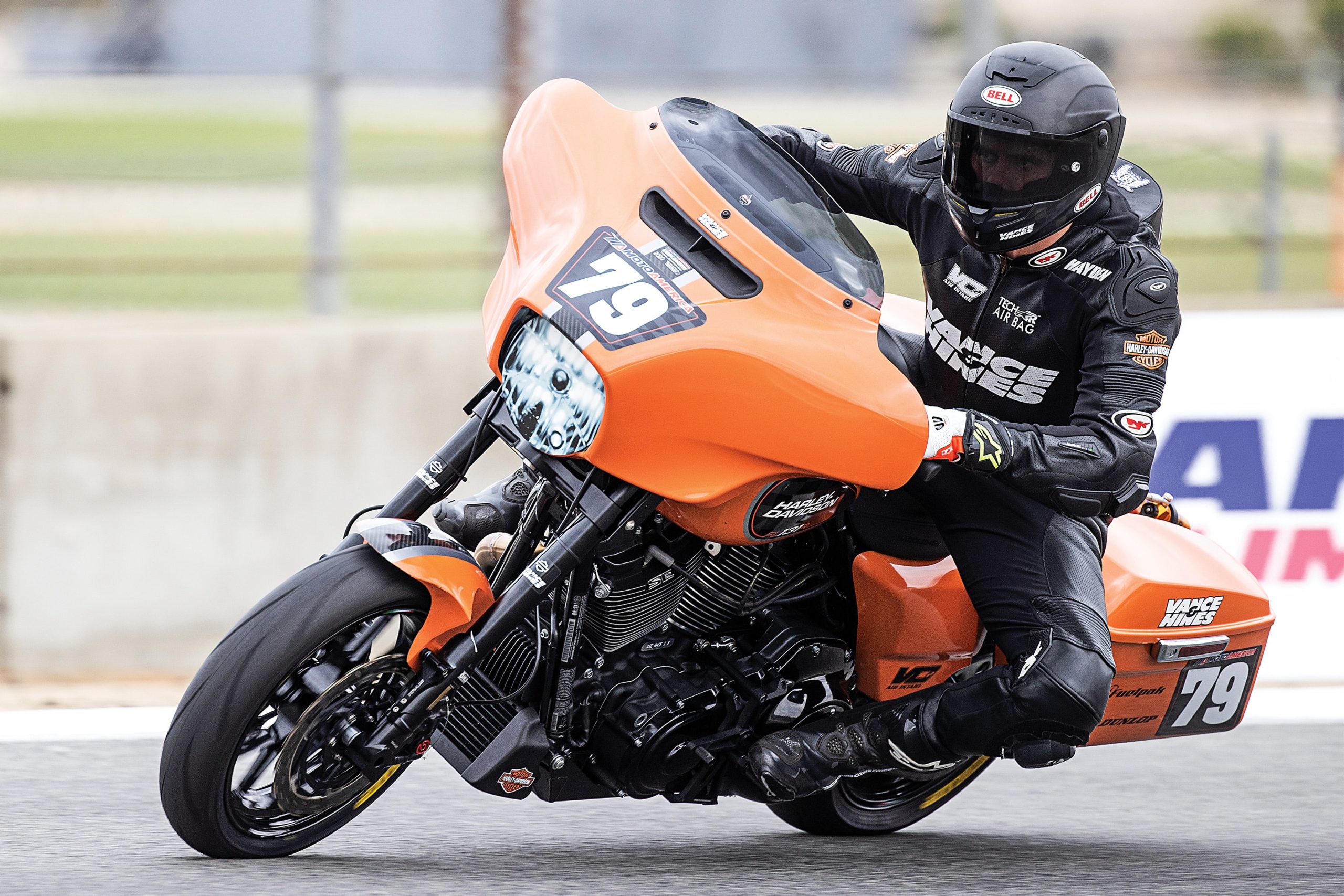
















[…] Check out Thunder Press’ coverage of the race Here and Here and Here […]